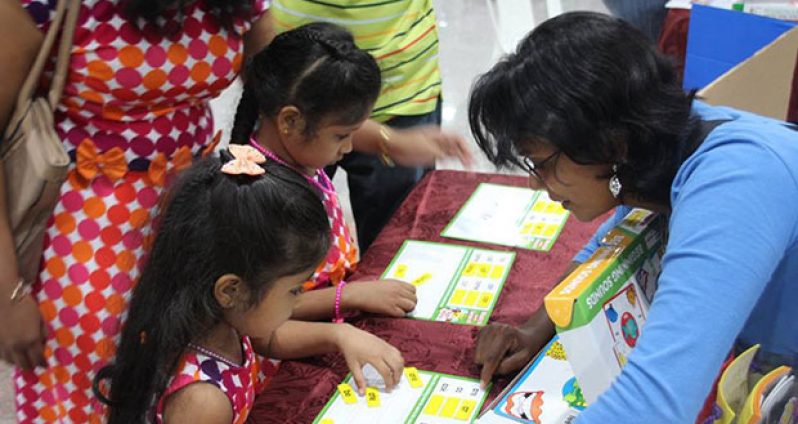– And the ratio resembles that of the classroom
In 2015, 41% of the candidates who wrote the Caribbean Secondary Education Certificate (CSEC) Examination were males, clearly outnumbered by females, and continuing a steady trend which has been seen annually across the region, including Guyana.The trend may be relative to the female/male teacher ratio of Guyana’s education system in which there are more females than males.
According to additional statistical data from the Caribbean Examinations Council (CXC) , the body which administers the CSEC examinations, since 2008 a total of 55, 130 males wrote the exam while 77, 544 females wrote the exam – a 42:58 ratio.
In Guyana, the figures for the 2015 examinations as announced by the Ministry of Education indicated that 4,677 males and 8,132 females sat the examinations; this translates to a 37:63 male/female ratio.
The previous year, the amount of females (8, 837) was almost double the amount of males, 4,887.
Top CSEC performers
Annually, the top CSEC performers across the country have been the females and this is reflected in the 2016 results of the CSEC exam results where St Rose’s High School student Fatima Karima obtained 19 Grade One passes at the examinations.
Previous year’s results indicate that the females obtained more grade one passes in the results announced by the CXC.
2015: Victoria Najab -20 Grade Ones
2014: Elisa Hamilton -19 Grade Ones
2013: Zamina Rasheed-18 Grade Ones
2012: Sarah Hakh-16 Grade Ones
The performances may be a reflection of the country’s education system in which the females have been dominating the teaching profession annually.
In 2015, a total of 506 persons graduated from the Cyril Potter College of Education(CPCE) as trained teachers ; the previous year ,a total of 359 trained teachers graduated from CPCE while in 2013, the figures stood at 300.
Of the figures published, a significant percentage of the total for each year of graduate teachers, were females, outnumbering the males annually by more than 50%.
The absence of the menfolk as educators may have an impact on the results, at least as role models.
Data provided by the Education Ministry’s in its Statistic Digest Data for 2008-2009 informs that the ratio of male to female teachers in the education system is at an alarmingly higher rate in favour of the female educators.
For the Nursery level the male/female ratio was 1:247, at the Primary level, 1:7 and at the secondary level the ratio stood at 1:2.
Primary Education
Information suggests that around the year 2000, there were similar number of trained male and female teachers in Guyana’s primary education system but the figures changed significantly over a 12 year period.
In a 2012 World Bank indicators report, the figures provided indicate that there were a total of 4079 primary teachers in Guyana. Of this number, 3612 were females.
In October 2015, President of the Guyana Teacher s Union, Mark Lyte was quoted in this publication as stating that “There are more female teachers than male teachers. This is mainly because of the insufficient remuneration that is being offered to teachers”, he said at the time.
He added that, “It would not attract males because they are the breadwinners at home. So I think this is what has contributed to the shortage of male teachers in schools,” said Lyte.
The GTU opted for a 25% increase in wages and salaries for teachers for in its new multi-year agreement which seeks to attract more males into the teaching profession.




.png)









